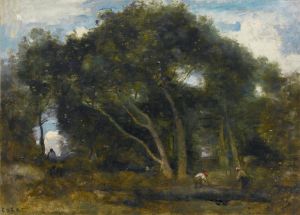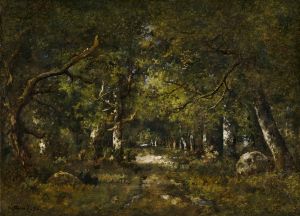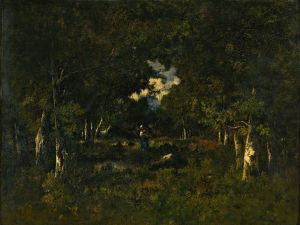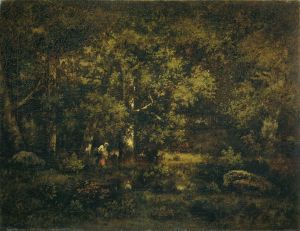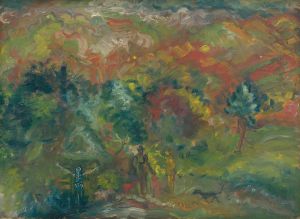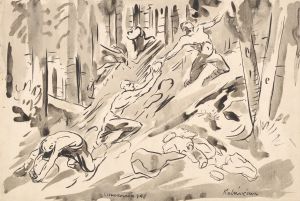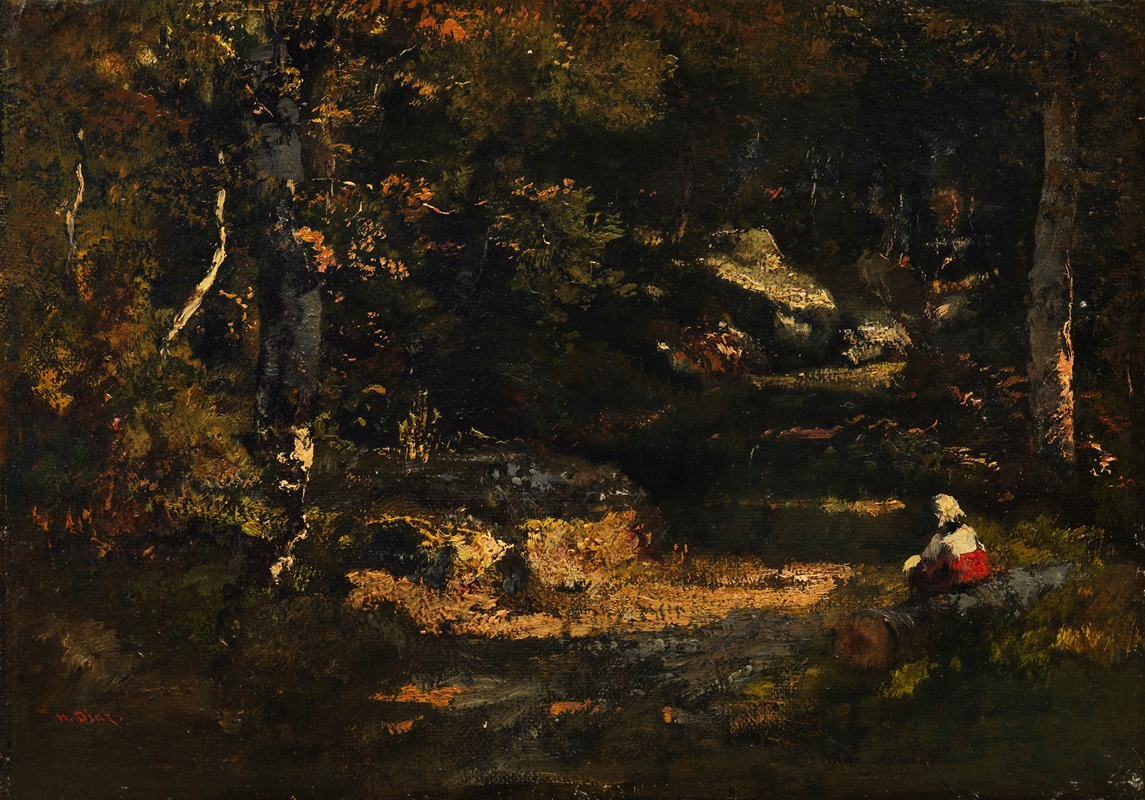
Femme assise sur un tronc d’arbre
A hand-painted replica of Narcisse-Virgile Diaz de La Peña’s masterpiece Femme assise sur un tronc d’arbre, meticulously crafted by professional artists to capture the true essence of the original. Each piece is created with museum-quality canvas and rare mineral pigments, carefully painted by experienced artists with delicate brushstrokes and rich, layered colors to perfectly recreate the texture of the original artwork. Unlike machine-printed reproductions, this hand-painted version brings the painting to life, infused with the artist’s emotions and skill in every stroke. Whether for personal collection or home decoration, it instantly elevates the artistic atmosphere of any space.
Narcisse-Virgile Diaz de la Peña was a prominent 19th-century French painter associated with the Barbizon School, a movement that emphasized naturalism and the depiction of rural landscapes. One of his notable works is "Femme assise sur un tronc d’arbre" (Woman Sitting on a Tree Trunk), which exemplifies his skill in capturing the interplay between figures and their natural surroundings.
Diaz de la Peña was born in Bordeaux, France, in 1807 and became known for his richly colored and atmospheric landscapes. His work often featured figures set against lush, wooded backgrounds, a hallmark of the Barbizon School's focus on nature. "Femme assise sur un tronc d’arbre" is a testament to his ability to blend human figures harmoniously within the landscape, creating a scene that is both tranquil and evocative.
The painting depicts a woman seated on a tree trunk, surrounded by a forested environment. Diaz de la Peña's use of color and light is notable, as he employs a warm palette to convey the dappled sunlight filtering through the trees. The woman's attire and posture suggest a moment of rest or contemplation, adding a narrative element to the composition. This integration of figure and landscape is characteristic of Diaz de la Peña's work, where the human presence is an integral part of the natural world rather than a separate entity.
Diaz de la Peña's technique involved loose, expressive brushwork, which can be observed in the rendering of the foliage and the texture of the tree trunk. This approach contributes to the overall impressionistic quality of the painting, a style that would later influence the Impressionists. His ability to capture the transient effects of light and atmosphere is evident in "Femme assise sur un tronc d’arbre," as the scene appears to be bathed in a gentle, golden glow.
The Barbizon School, named after the village of Barbizon near the Forest of Fontainebleau, was a precursor to Impressionism, and Diaz de la Peña was one of its leading figures. The movement sought to break away from the formalism of academic art and instead focused on painting en plein air, or outdoors, to capture the natural world with immediacy and authenticity. Diaz de la Peña's work, including "Femme assise sur un tronc d’arbre," reflects this philosophy, emphasizing the beauty and serenity of the natural landscape.
Throughout his career, Diaz de la Peña exhibited regularly at the Paris Salon, where his works were well-received. He was known for his ability to convey mood and emotion through his landscapes, often infusing them with a sense of romanticism. "Femme assise sur un tronc d’arbre" is a fine example of his artistic vision, where the simplicity of the scene belies the complexity of its execution.
In summary, "Femme assise sur un tronc d’arbre" by Narcisse-Virgile Diaz de la Peña is a quintessential representation of the Barbizon School's ideals. Through his masterful use of color, light, and composition, Diaz de la Peña creates a harmonious blend of figure and nature, inviting viewers to appreciate the quiet beauty of the natural world. His work continues to be celebrated for its contribution to the development of landscape painting in the 19th century.






